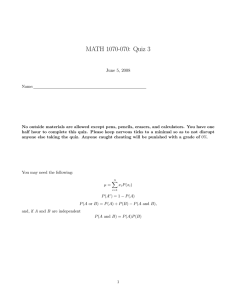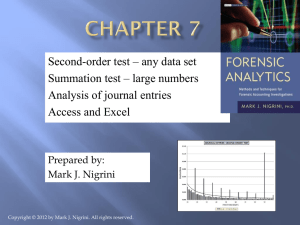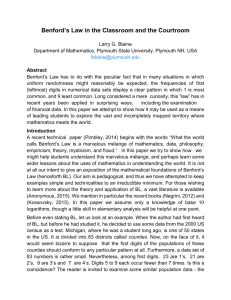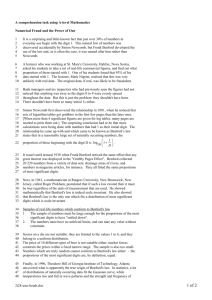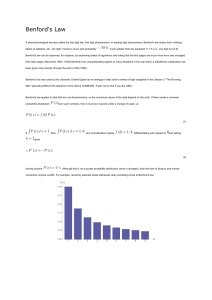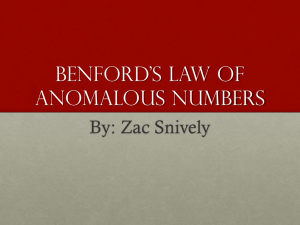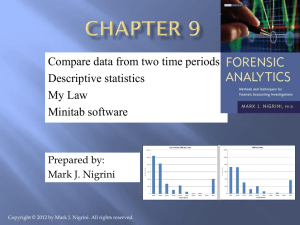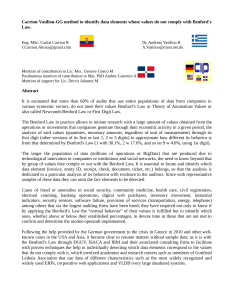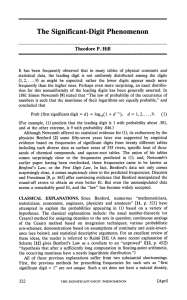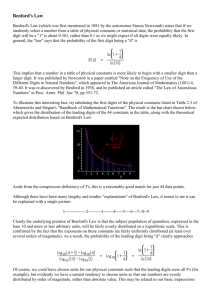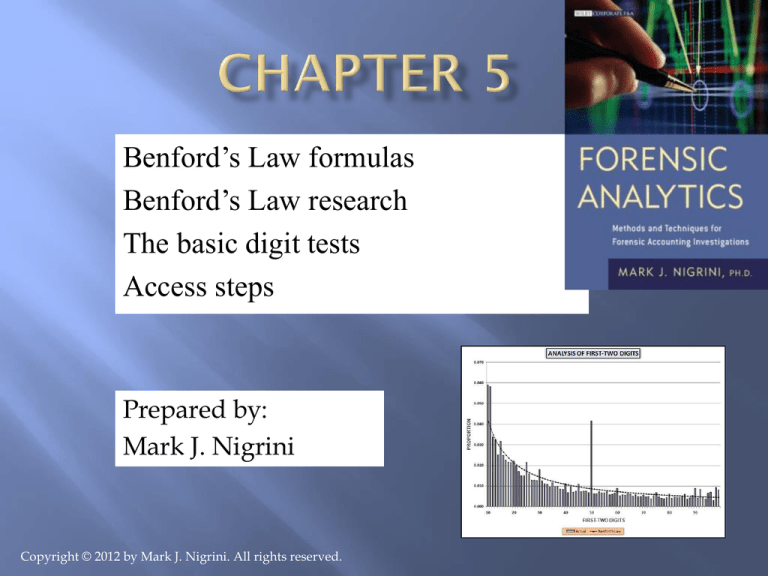
Benford’s Law formulas
Benford’s Law research
The basic digit tests
Access steps
Prepared by:
Mark J. Nigrini
Copyright © 2012 by Mark J. Nigrini. All rights reserved.
1948, mental numbers
1960, scale invariance (x by a constant)
1965, can’t use middle 3 digits as random
numbers
1969, article in Scientific American
1971, first Fibonacci numbers paper
1972, use Benford to test forecasts
1976, Raimi’s review paper
1988, rounding up of accounting numbers
1988, invented numbers
1989, U.S. study of accounting numbers
1992, rounding up of EPS numbers
1995, random samples from random
distributions are Benford
1996, tax evasion application
1997, auditing application
1999, Journal of Accountancy article
Numbers should represent the sizes of
facts or events
No built-in maximum or minimum
Numbers should not be identification
numbers (bank account numbers or
flight numbers)
Spike at 24 when vouchers are needed @ $25
Spikes below psychological cutoffs of 48, 49,
98, and 99
Systematic frauds, e.g., credit card balances
Comparing two inventory sheets
Spike at 14 for U.K. revenue numbers
Spike at 24 for purchasing cards
Spike at 48 for employee reimbursements
Benford’s Law gives the expected frequencies of
the digits in tabulated data
Large bias towards the low digits
Some important papers in the 1940 to 2000 period
Applies to data sets that meet the three conditions
Works best on data sets with > 1,000 records
Easy to spot excess activity below control
thresholds
Access can calculate the digit frequencies
Excel can be used to graph the results

